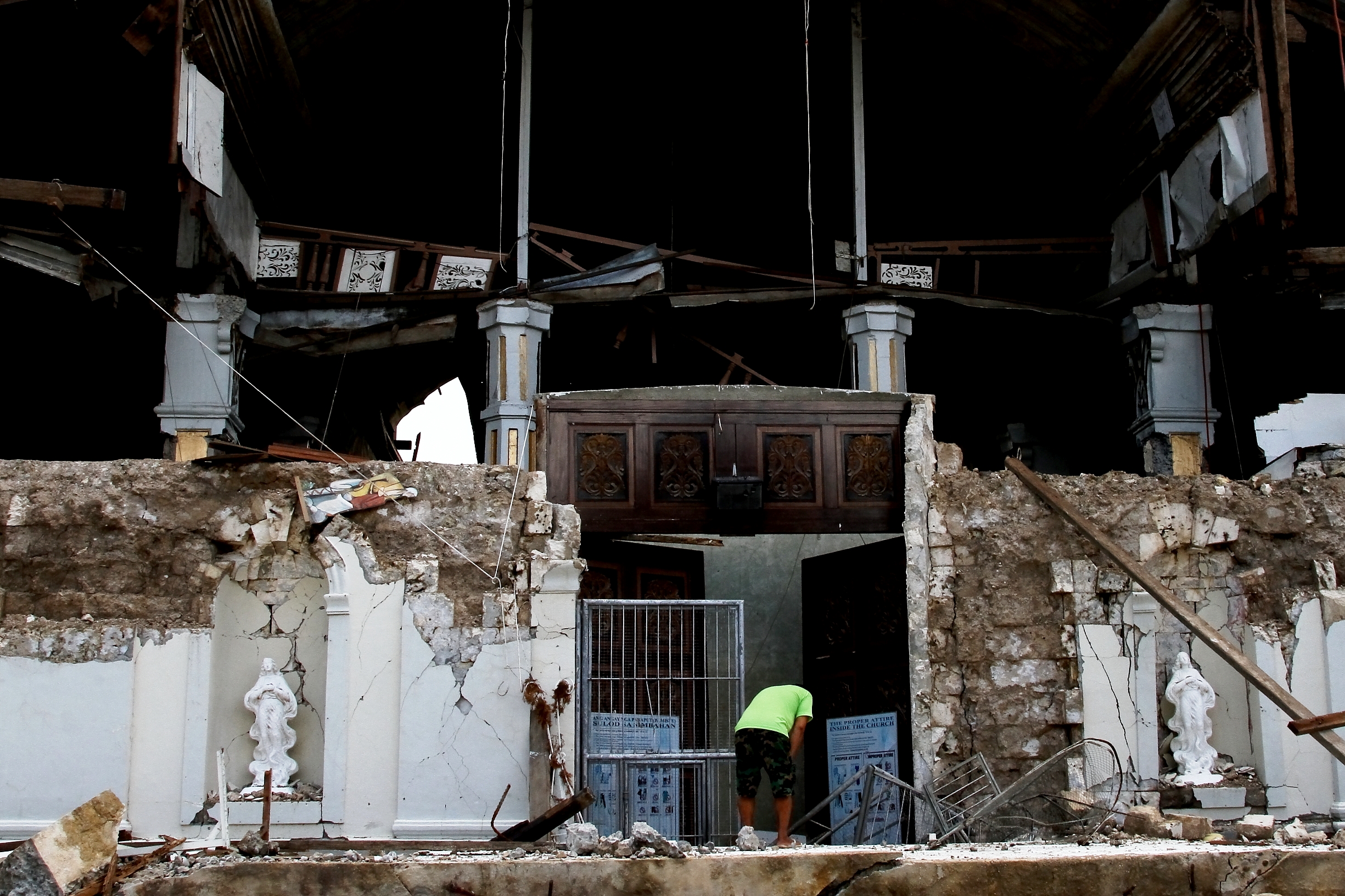The Philippines went through back-to-back emergencies, starting with the siege of Zamboanga City on the southern island of Mindanao by Moro National Liberation Front (MNLF) rebels in September 2013.
After barely recovering from a three-week standoff, a 7.2-magnitude earthquake hit the island of Bohol, some 360km to the north, in central Philippines on 15 October.
Finding home in Zamboanga
“Shelter remains to be our biggest challenge,” said Wouter De Cuyper, a field officer for the UN Office for the Coordination of Humanitarian Affairs (OCHA) in Zamboanga City, where more than 63,000 people were still displaced on 14 January.
“Those who used to live in the areas most affected by the fighting, or whose houses were burned during the fighting, cannot go back to their homes yet,” said De Cuyper. An estimated 10,000 homes were destroyed by fire during the conflict.
According to the Zamboanga City Public Information Office (PIO), 834 families have been transferred to bunkhouses constructed by the local government and the International Organization for Migration (IOM), and there are plans to relocate more people so as to decongest the evacuation centres.
“Temporary shelters have been constructed to accommodate 1,000 families. It is expected that by [the] first quarter of this year [2014], we will commence with the construction of on-site permanent shelter,” Maria Isabelle Climaco-Salazar, the mayor of Zamboanga, wrote to IRIN in a text message.
But even identifying suitable sites - either transitional or permanent - to which displaced people could be transferred is problematic because of national policy on the non-establishment of coastal communities according to the Philippine Water Code’s article 51, which prohibits construction three metres from a coastline or riverbank in urban areas. The no-build zone is 20 metres in agricultural areas and 40 metres in forested ones.
“We need to take into consideration that many of the IDPs [internally displaced persons] previously resided in houses on stilts in the coastal communities,” wrote Climaco-Salazar. “We estimate a 12-month timeframe wherein IDPs shall have returned to their places of origin, or [been] relocated to a place in proximity to their previous residences.”
Under the Zamboanga Roadmap to Recovery and Rehabilitation Plan (Z3R), an estimated US$80 million will be needed to provide housing and infrastructure assistance.
On 25 January, the government and the country’s largest Muslim group, the Moro Islamic Liberation Front (MILF) announced progress toward a final peace deal to end decades of insurgency in the south. It is expected that this agreement, which will create an autonomous Muslim region with local powers, will be signed in the coming months.
Quake in Bohol
Shelter and relocation are also the biggest challenge on the central Philippine island of Bohol, where the October earthquake killed more than 200 people, displaced 300,000 others and destroyed more than 76,000 homes.
A report on 10 January 2014 showed that almost 600 families were still housed in evacuation centres, and many more were living in tents near their destroyed homes, or with extended family members.
The national government’s Bohol Earthquake Action Plan says $46.8 million will be needed to address the needs of the more than 300,000 people affected by the calamity until April 2014. To qualify for assistance, families must have a total monthly income of less than $227. The national government has allocated $20.7 million for earthquake survivor housing assistance.
So far, the national Department of Social Welfare and Development (DSWD) has allocated emergency housing assistance of $227 to families with partially damaged homes, and “core” shelter assistance of $1,590 to those with totally damaged homes so they can start rebuilding more durable housing. Families must earn less than $227 monthly to qualify.
But just as officials started identifying families most in need, a new catastrophe interrupted relief efforts. “Initial assessments of partially and totally damaged homes were started by the DSWD immediately after the earthquake. However, when [Typhoon Haiyan, locally called] Yolanda struck [elsewhere in the Central Philippines], DSWD personnel had to be reassigned to Yolanda areas,” said Liza Quirog, head of the government’s inter-agency coordinator for Bohol relief efforts.
“We are finalizing the list of qualified beneficiaries today [27 January] so we can meet the target for the release of DSWD funds scheduled for this week,” Quirog said.
Landslides and sinkholes
Loisella Lucino, Bohol’s provincial director, noted that “There is also a problem of finding suitable settlement sites because areas have been declared as landslide-prone… [on] geo-hazard maps.”
The maps were prepared by the Mines and Geosciences Bureau of the Department of Environment and Natural Resources (MGB-DENR), and classify defined areas as having low, moderate or high susceptibility to floods, flash floods and landslides. Quirog said six areas have been declared uninhabitable because they are prone to landslides or have sinkholes.
Despite these challenges, the spokesman for the government’s Office of Civil Defence, Major Reynaldo Balido, assured IRIN that survivors’ needs will be met. “We will not forget the crises in Zamboanga and Bohol,” he said. “Budgets have been earmarked for the recovery of these two areas, and personnel from national government agencies have been assigned to oversee efforts.”
as/pt/he
This article was produced by IRIN News while it was part of the United Nations Office for the Coordination of Humanitarian Affairs. Please send queries on copyright or liability to the UN. For more information: https://shop.un.org/rights-permissions




